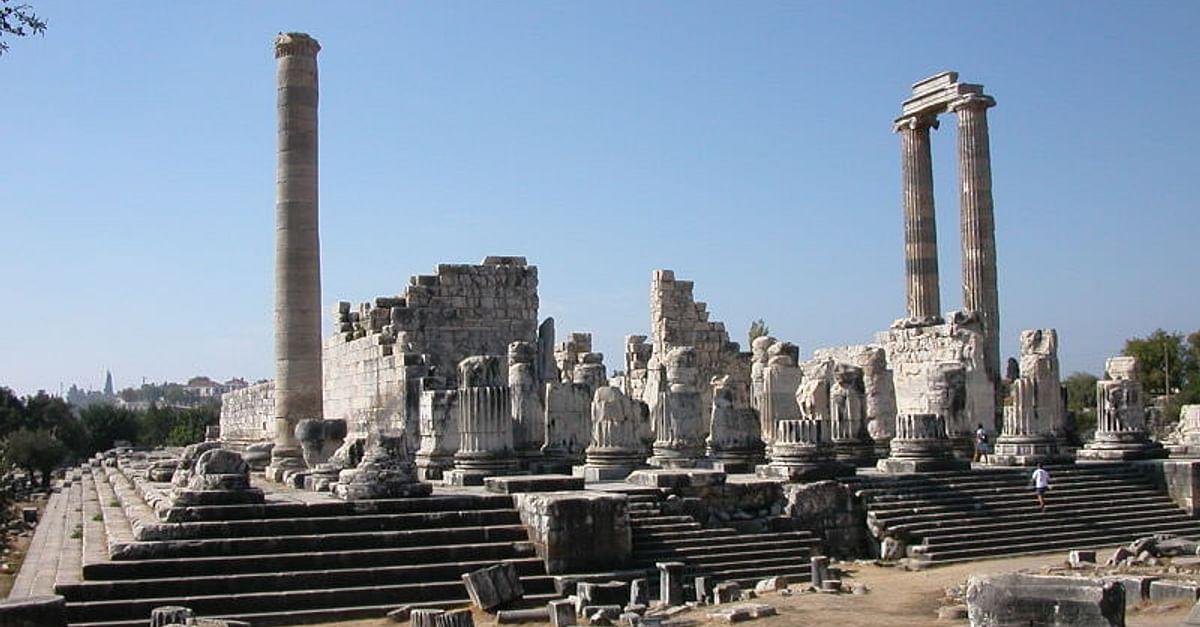Muscat, the capital city of Oman, is a captivating blend of traditional Arabian architecture and modern design, reflecti...
The Architectural Splendor of Rhodes, Greece

Rhodes, the largest of the Dodecanese islands, is renowned for its rich history, stunning landscapes, and exceptional architecture that reflects a blend of ancient Greek, medieval, and Ottoman influences. The island's architectural legacy is a testament to its strategic importance in the Mediterranean, making it a captivating destination for history enthusiasts and architecture lovers alike.
The Old Town of Rhodes, a UNESCO World Heritage Site, is one of the best-preserved medieval towns in Europe. Surrounded by formidable walls and towers, this ancient city is a maze of cobbled streets, charming squares, and historical buildings. The Palace of the Grand Master, a magnificent fortress constructed by the Knights of St. John in the 14th century, serves as a focal point of the Old Town. Its imposing structure, adorned with intricate stone carvings and Gothic elements, reflects the military and cultural significance of the knights during their rule.

The architecture of the Old Town showcases a harmonious blend of various styles. The medieval buildings, with their arched doorways and fortified structures, coexist alongside Ottoman mosques and neoclassical mansions. The Suleymaniye Mosque, built in the 16th century, is a prime example of Ottoman architecture on the island. Its elegant dome, minaret, and decorative tilework are a testament to the cultural exchange that took place during this period.
Another architectural highlight is the Street of the Knights, a picturesque lane lined with medieval inns that once housed the knights of St. John. Each inn is named after a different language group, reflecting the diverse origins of the knights. The cobblestone street, flanked by stone walls and adorned with vibrant bougainvillea, transports visitors back in time, offering a glimpse into the island’s rich past.

The Acropolis of Rhodes, located on the hill of Monte Smith, is a significant archaeological site that showcases ancient Greek architecture. The remains of the Temple of Apollo, dedicated to the god of music and poetry, stand as a testament to the island’s ancient civilization. The temple’s Doric columns and layout reflect classical Greek architectural principles, while the stunning views of the Aegean Sea provide a breathtaking backdrop.
In addition to its historical landmarks, Rhodes is also home to a variety of neoclassical buildings that emerged during the 19th and early 20th centuries. The Municipal Art Gallery, housed in a neoclassical mansion, features a collection of contemporary Greek art and hosts cultural events. Its elegant façade and spacious interiors exemplify the architectural trends of that era, blending traditional elements with modern sensibilities.
The architecture of Rhodes is further enriched by its traditional villages, where narrow streets are lined with charming whitewashed houses adorned with colorful shutters and terracotta roofs. The village of Lindos is particularly famous for its stunning architecture, featuring a mix of ancient ruins and traditional Dodecanese houses. The Acropolis of Lindos, perched atop a cliff, offers panoramic views and showcases the remnants of ancient temples and fortifications.

The island’s unique architectural character is also reflected in its churches, which often combine Byzantine and Gothic styles. The Church of Our Lady of Filerimos, located on the site of an ancient temple, features a beautiful facade adorned with frescoes and intricate stonework. The church’s serene atmosphere and stunning views of the surrounding landscape make it a popular destination for visitors seeking spiritual solace.
The use of local materials in Rhodes’ architecture is another defining feature. The island’s abundant limestone and volcanic stones have been utilized for centuries to create sturdy and visually striking structures. The traditional building techniques, passed down through generations, emphasize sustainability and harmony with the environment. This connection to the land is evident in the rustic charm of the island’s farmhouses and rural buildings.

Rhodes’ architectural landscape is also shaped by its coastal location, with many buildings designed to take advantage of the stunning sea views. The modern resort hotels along the coast feature sleek designs and contemporary amenities while blending harmoniously with the natural surroundings. The architectural approach emphasizes luxury and comfort, providing visitors with a unique experience of the island’s beauty.
The presence of ancient ruins scattered throughout Rhodes adds another layer to the island’s architectural narrative. The ancient city of Kamiros, one of the three ancient cities of Rhodes, showcases the remnants of classical Greek urban planning. The layout of the city, with its streets, houses, and public buildings, reflects the principles of ancient Greek architecture and provides insight into daily life during that time.
As Rhodes continues to evolve, there is a growing emphasis on preserving its architectural heritage while accommodating modern development. Efforts to restore and maintain historical sites are ongoing, ensuring that future generations can appreciate the island’s rich architectural legacy. The balance between conservation and contemporary design is a key consideration for urban planners and architects, allowing Rhodes to retain its unique character while embracing progress.
The cultural significance of architecture in Rhodes is further highlighted by the various festivals and events held throughout the year. The Medieval Rose Festival celebrates the island’s medieval heritage, featuring reenactments, music, and traditional crafts. The architectural backdrop of the Old Town enhances the festive atmosphere, creating a vivid connection between past and present.
In addition to its historical and cultural importance, the architecture of Rhodes reflects the vibrant lifestyle of its residents. Cafés, shops, and galleries line the streets, inviting locals and visitors to engage with the community. The architectural diversity fosters a sense of belonging and creates a lively atmosphere, making Rhodes a welcoming destination for all.
As visitors explore the architectural wonders of Rhodes, they are transported through time, experiencing the layers of history that have shaped the island. From the grandeur of the Palace of the Grand Master to the charming streets of Lindos, Rhodes offers a captivating journey through its architectural heritage. Each building tells a story, reflecting the island’s past while embracing the future.
In conclusion, the architecture of Rhodes, Greece, is a captivating blend of historical influences, cultural diversity, and modern developments. The harmonious coexistence of ancient ruins, medieval structures, and contemporary designs creates a unique urban landscape that enchants all who visit. From the iconic landmarks of the Old Town to the picturesque villages and coastal resorts, Rhodes is a living testament to its rich architectural heritage.
The island’s commitment to preserving its historical sites while embracing contemporary design ensures that Rhodes will continue to thrive as a cultural and architectural destination for generations to come. With every street, building, and ruin revealing layers of history and artistry, Rhodes invites all to explore its architectural charm and experience the rich stories that each structure has to tell. The island’s architecture not only reflects its glorious past but also shapes its vibrant present and promising future, making it a true gem of the Aegean Sea.
Share:




